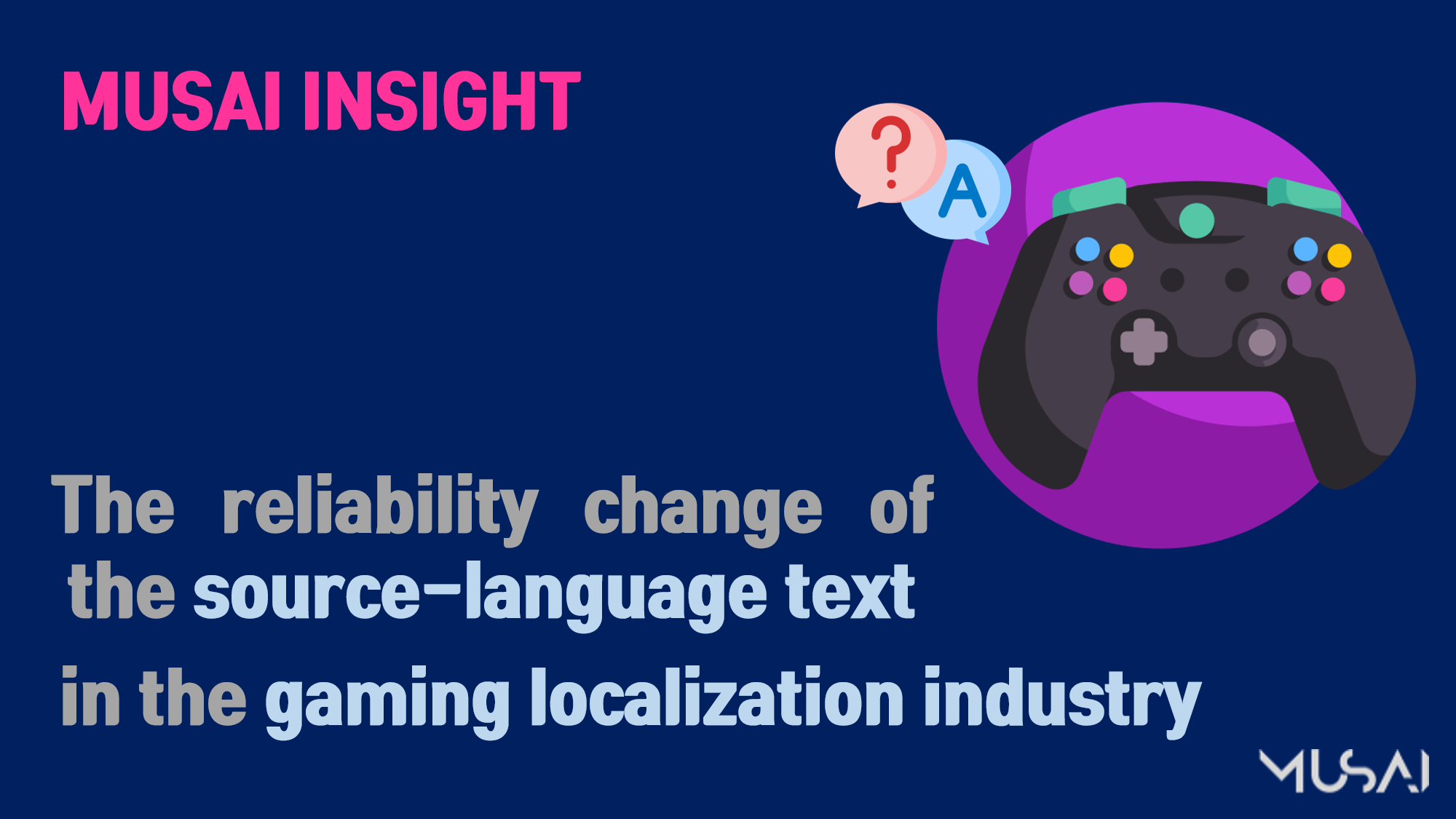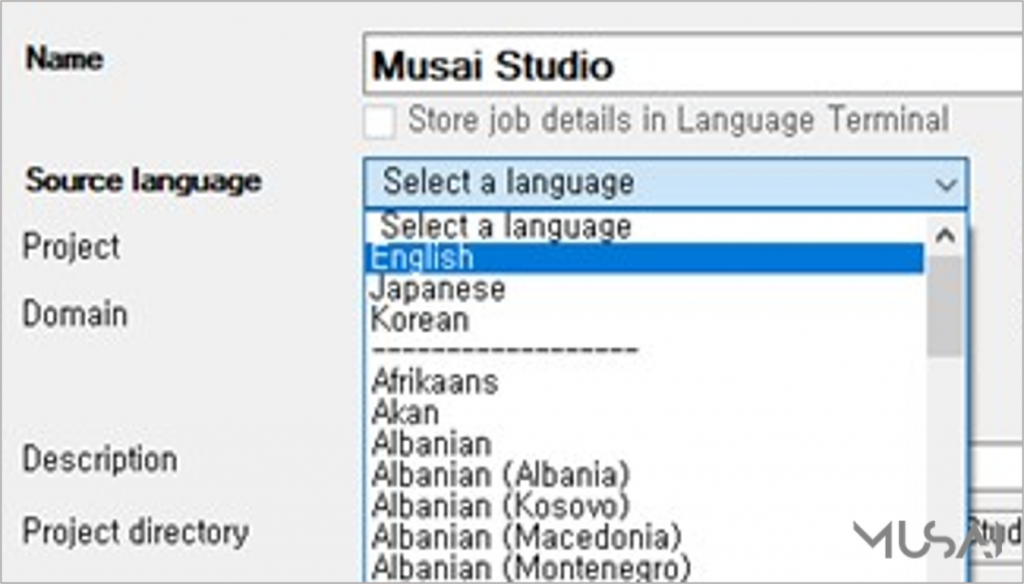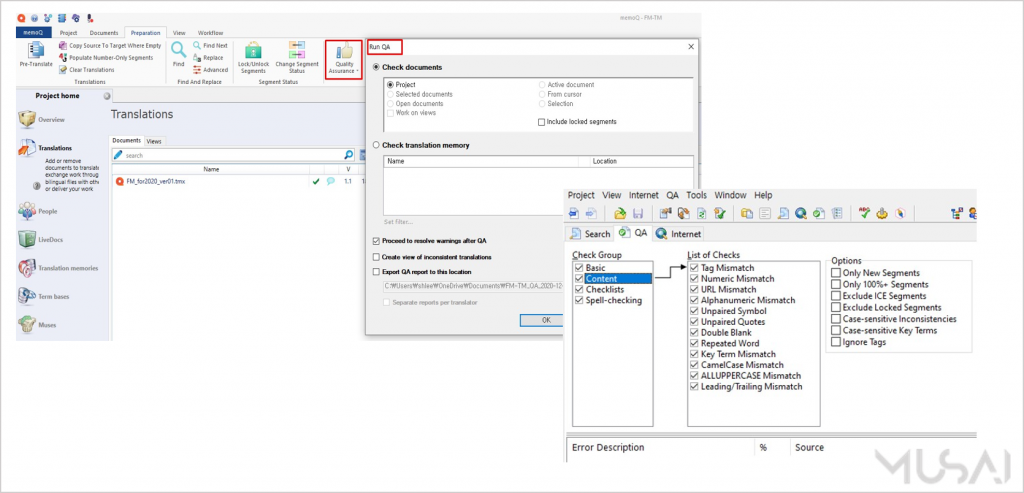[MUSAI] The reliability change of the source language text in the gaming localization industry

2020-12-04
Even though we are aware that life has been rapidly changing, it’s still not easy to adapt to all the changes at this fast pace. Most of all, the gaming industry requires to be agile for the changes, and the gaming localization industry which is closely related to it requires more flexibility in the way work likewise. It’s because one flap of a butterfly’s wings within the gaming industry can cause a tornado on the side of the localization industry.
As a localization agency, we would like to say that one of the big changes in the gaming industry in a decade is the trend of ‘Simship’, the concurrent distribution of a game to all target markets over the world. There were not many titles to be launched simultaneously in the past, but it’s almost considered an essential requirement to ensure its success these days especially for AAA level titles. According to this change in the gaming industry, the process of localization has been extremely changed and high flexibility is required more than before.
In this article, we will talk about what the trend of ‘Simship’ brought to the localization industry and what we have to know to minimize the following issues during the localization process. Let’s start with the question below.
When do you start the localization process?
In general, when the localization process gets started, it is assumed that the source-language text is completed. If the source-language text is not “reliable”, it will cause not a little confusion during the entire localization process from translation to QA phase. Game playthrough and glossary creation will be much less effective if there were a bunch of revisions in the source-language text as well.
For those reasons, the localization process was expected to start when the source-language text is completed by 80-90% not even long ago. Furthermore, not only the in-game text but also the game development nearly reaches completion at this point, so a playable build can be shared to the localization team. In this stage, only minor revisions or modifications are possibly happened but mostly they are not severe enough to affect the whole story or concept of the game.

Don’t forget the source-language text is unpredictable!
However, it has been changed a lot in recent years – the source-language text is not reliable anymore. To be specific, it means there can be ‘a possibility to be changed’, rather than that there are many errors.
The reason behind this issue is the trend of ‘Simship’ in the gaming industry as mentioned earlier. Most of games, with emphasis from AAA level titles, have a goal of ‘Simship’ as high priority so it’s inevitable to have a busier development schedule than before. Accordingly, it is asked to begin the localization process in the middle of development and that’s why the source-language text should be assumed to be changeable. The problem is, the change is not going to be just a minor modification of terms and sentences – it happens that the attributes of characters are changed (or even eliminated!) and the core storyline is revised while localizing the game. If things come to this, the cost for localization becomes increased but it’s accepted as a necessary cost to achieve the quality of game.
How to minimize the following problems and ensure the quality
Context, Context, Context!
With the unpredictable source-language text, the only factor you can rely on is ‘context’. If sufficient information and materials about the content are provided, it’s available to guess the flow of the source-language text more precisely from the context and mistranslation can be prevented regardless of frequent changes. That’s why it’s important to assure the information of game as much as possible to figure out the context.
For example, the in-game text should be localized differently according to the type of content such as UI, Help, audio script, etc. However, when a batch of source-language text without any clue to guess the context is provided to the localization team, it’s hard for them to clarify where the text belongs to and whether the translation is appropriate or not. In this case, revision and correction are unavoidable once the entire text come together. It will cause not only the delay of the localization schedule but also additional cost.
Put your priority on the version management of files
Second, version management of files is a crucial process to minimize following problems from the unpredictable source-language text. It may sound a matter of course and nothing special but imagine that thousands of small files fly back and forth during the entire localization process until the end of development. It’s definitely easy to lose the history as time goes by and possibly cause chaos.
If you have been in the localization industry for years, you may come up with the management software and suggest using it. You are right. Normally, it is available to track the version history of files in ‘version control software’ or ‘CAT tool’. However, since the source-language text is updated daily or weekly and its localization should be done immediately in the current circumstance, the format of files are usually ‘plain text file (.txt)’ or ‘excel sheet (.xlm)’ for convenience, which means it’s not easy to use the programs above. Therefore, the final versions of each file need to be checked manually every time the work is done in some cases.

Be more heedful in final QA
Once all the small files are localized, one final piece should be formed in order to fulfill quality assurance. Of course, QA is an elaborate process to meet the requirement and confirm the quality, but it should be more precisely fulfilled in this case. While localizing the small files, it must be hard to avoid a lack of understanding about the whole storyline of game due to the development progress. Therefore, more factors will need to be checked range from the core storyline to small consistency and quality assurance has grown in importance.

The gaming industry will keep changing whether we want or not. The only way to survive in the change as for a localization agency is listing up the possible problems in advance and being agile once they happen.
However, there are always unpredictable issues in all the projects, especially if it’s a large-scale project. That’s why communication between developers and localization team (or agency) is important more than anything to ensure the quality. Developers should share information of game as much as possible and localization team shouldn’t hesitate to give a query and suggestion to prevent the possible issue.
Furthermore, experience is significant to predict issues and propose suggestions in the environment full of variety. Senior managers with the experience based on many projects and the eyes available to read the trend of gaming industry can forecast issues from the unreliability of source asset and setup a plan accordingly. It can’t help but being easy for agencies without the in-depth insight and flexibility to trust source asset too much and face the difficulty to deal with the following issues. Thus, the harmony between experienced senior managers and creative junior team members are considered essential to overcome the difficulties in agency point of view.
** Did you enjoy the news of Musai? Please click subscribe and share the story.
BOOST YOUR PLAY! Musai Studio







